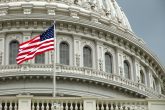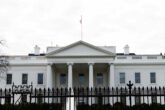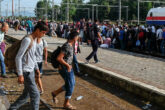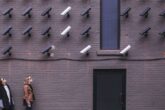October 15, 2020
Working Case Study: Congressional Influence on the Decision to Intervene in Somalia
Introduction
Conventional wisdom usually portrays “the CNN effect” as the most significant driver of the U.S. decision to intervene in Somalia in December 1992 and withdraw forces in March 1994. While the foreign policy power of the news media shaped lasting public impressions of this humanitarian crisis and the U.S. role there, such attributions undercut the impact of several factors. In an environment where advocates were clamoring for humanitarian intervention in multiple theaters, a few key members of Congress were influential in spurring media attention and top-down White House interest in the growing Somali crisis in 1992. Though not the single decisive player, lawmakers laid groundwork for launching (and ending) the Somalia mission in formal and informal actions, an experience that fed wariness about future humanitarian operations and the broader U.S. role in the post-Cold War world.
Background
The regime of Siad Barre, once a Cold War ally of the United States, fell in early 1991 after a month of fighting that destroyed much of the capital of Mogadishu and led to the evacuation of the U.S. embassy. Following the collapse of the central government, conflict continued among over a dozen rival factions for control of the capital and other parts of the country, accompanied by a severe drought that instigated the use of food as a prevailing currency.1 In the subsequent year of war and famine, more than 300,000 Somalis died. U.S. humanitarian assistance, including food aid, began early on in support of the United Nations and other international relief organization efforts. Congressional action before the summer of 1992 was fairly limited; without demanding a specific change in policy, Congress expressed the overall sense that the White House and the U.N. should continue to address the humanitarian and political crisis.2
By midsummer, in parallel with new U.N. Secretary General’s Boutros Boutros-Ghali’s advocacy for more aggressive international involvement in Somalia,3 the Congressional Hunger Caucus had become a platform for congressional advocates and administration representatives pushing for the United States to “become more actively engaged in efforts to achieve a cease-fire and ensure food deliveries.”4 These and other hearings became a useful tool for congressional leaders to draw out and highlight divisions in the administration regarding the U.S. role in Somalia. Inside the George H. W. Bush administration, a raw, powerful cable from U.S. Ambassador to Kenya Smith Hempstone after his June visit to Somali refugee camps caught the attention of National Security Advisor Brent Scowcroft, who shared it with Bush. Bush asked to be kept apprised of events in Somalia, a factor driving a flurry of inconclusive deputies’ committee meetings through July, wherein the Department of Defense (DoD) strongly opposed any larger U.S. role in the conflict.5 Fed by their own information advantages and cohesive position, the selective engagers at the White House and DoD dominated the policy debate.6
Fed by their own information advantages and cohesive position, the selective engagers at the White House and DoD dominated the policy debate.
At a moment when the internal U.S. government debate was stalemated, Senator Nancy Kassebaum accompanied James Kunder, head of the Office of Foreign Disaster Relief, on a trip to Mogadishu to see Somali refugee camps along the border in Somalia, significantly altering the information access of those favorable toward intervention. Immediately on her return (July 22), Kassebaum, the ranking member of the Senate Foreign Relations Subcommittee on Africa, capitalized on her trip with a forceful testimony before the House Select Committee on Hunger, criticizing the Bush administration’s policy. Following her testimony, Kassebaum began a timely media campaign that evening with appearances on The MacNeil/Lehrer NewsHour and a long Somalia feature on ABC’s World News Tonight that underscored her trip and testimony.7
A U.S. embassy official in Kenya called Kassebaum’s visit and testimony, where she pushed for American support of a U.N. peacekeeping force, “a turning point in U.S. policy,” bringing sustained media and executive attention to the crisis and creating momentum behind alternative policy options.8 Later analysis of the so-called “CNN effect” found that Kassebaum’s influence and efforts (along with her Democratic counterpart Senator Paul Simon) to propose a change in policy—and publicly chastising the Bush administration—were “necessary . . . to get the story on television.”9 In other words: contrary to conventional wisdom, television news did not drive U.S. policy toward Somalia; U.S. lawmakers provided the impetus and credibility for coverage. Asked about the U.S. decision to become more deeply involved in the conflict in Somalia, then-Deputy Secretary of State Lawrence Eagleburger mentioned the intense pressure felt from some members of Congress, “particularly my good friend, Senator Nancy Kassebaum . . . Though there wasn’t broad support for humanitarian efforts in Somalia, there was intense pressure from a few key members.”10
Contrary to conventional wisdom, television news did not drive U.S. policy toward Somalia; U.S. lawmakers provided the impetus and credibility for coverage.
Shortly thereafter, the pace and tenor of the Bush administration’s dialogue on Somalia shifted. A formal standing interagency task force was stood up to consider what else might be done beyond the continued provision of food aid, resulting in the president’s August 14 decision to commit DoD aircraft and personnel for an airlift of food supplies and the initial 500-strong Pakistani peacekeeping force. Still, U.S. participation in the peacekeeping force was very much opposed by senior White House leaders and the DoD. Convinced that the United States was risking another Vietnam-like quagmire, Chairman of the Joint Chiefs of Staff General Colin Powell made his negative views on the utility of limited humanitarian interventions well known. Nonetheless, pressures for such interventions increased as the U.S. foreign policy elite considered their post-Cold War role in the world, and as debates played out in prime time between President Bush and presidential candidate Bill Clinton. A parallel discussion on the prospects of U.S. intervention in Bosnia played out over the same period, with similar White House and DoD skepticism. With additional congressional trips and hearings, liberal humanitarian interventionists in Congress kept up a steady drumbeat of advocacy for more U.S. involvement in Somalia, arguing that it was possible, low risk, and relatively low cost. But no policy movement occurred until after the 1992 election.
On November 21, Vice Chairman of the Joint Chiefs David Jeremiah “shocked members at the deputies committee” by announcing that the Joint Staff had reversed its position: If an intervention in Somalia was desired to secure the environment for humanitarian aid delivery, the military could do it—at the cost of 30,000 troops.11 Within four days, Bush supported the proposal, provided it received U.N. authorization.
Liberal humanitarian interventionists in Congress kept up a steady drumbeat of advocacy for more U.S. involvement in Somalia, arguing that it was possible, low risk, and relatively low cost. But no policy movement occurred until after the 1992 election.
There is no single factor that changed the minds of Bush and Powell with the Joint Chiefs on the prospects of U.S. intervention in Somalia. Scowcroft described Bush’s sensitivity to his legacy, which appeared at risk due to growing liberal criticism, the pressures of a large collection of humanitarian NGOs’ appeals for further action, as well as Boutros-Ghali’s criticism of Bush’s avoidance of the crisis.12 Post-election, both Bush and Powell may have been persuaded that President-elect Clinton’s interest in intervention in Somalia and Bosnia alike were inevitable, as evidenced by their first foreign policy meetings with Clinton on November 18–19. Powell perceived that Somalia was a more manageable conflict and less likely to demand significant U.S. force commitments.
But such assessments should not ignore the influence of Congress. Bush later acknowledged the role of “congressional views on the urgent need for action” in his decision calculus.13 Acting Secretary of State Eagleburger also cited congressional pressures, along with television.14 Over the course of two weeks in November, prior to Bush’s about-face, Senators Kassebaum, Simon, and Harris Wofford held a press conference advocating for U.S. security forces. A large congressional delegation led by Congressman John Lewis visited Somalia and headlined major press briefings that also advocated U.S. action, teeing up long news reports on ABC, CBS, and NBC on November 18 and November 21.15 As it had in July, congressional advocacy and credibility drove the extensive news coverage reverberating back throughout Washington.
Takeaways
Congressional research staffer Ted Dagne and former Representative Harry Johnston concluded in their history of Congress’ role in Somalia that “Congressional concern about the Somalia situation, expressed through hearings, trips, letters, and informal contacts, had clearly helped to lay the groundwork for this large scale humanitarian deployment.”16 Of these actions, four takeaways stand out:
Credible (bipartisan) advocates punch above their weight: Senators Kassebaum (R) and Simon (D) were both longtime members of the Senate Foreign Relations Subcommittee on Africa and experts in their own right. After Kassebaum returned from her July visit to Somalia, Simon credited her for the trip and supported her findings and recommendations in full. These two senators, accompanied by a few others in the House and Senate, did not represent a wide swath of the Washington political establishment. But with their experience, together, they declared the Bush administration’s policy to be inadequate, which was deemed newsworthy, signaling to the media and broader public that a change in policy was both necessary and possible. This power dynamic had its limitations; once intervention progressed, congressional support was not widespread.
Use of hearings to incubate ideas: Over half a dozen hearings in the Select Committee on Hunger, the House Subcommittee on Africa, and the Senate Subcommittee on Africa were held over the course of 1992.17 Though not always headline makers, these hearings gave a few advantages to congressional overseers seeking an alternate policy approach in the Bush administration. First, they gave a platform for drawing out and highlighting liberal humanitarian actors within the Bush administration; Somalia coordinator Andrew Natsios openly provided his interlocutors with questions to drive policy debate.18 Second, they were occasionally, in Kassebaum’s case, linked to media outreach that amplified these stories. And third, as discussed below, they provided a forum to elevate the information advantages of those with an interventionist bent; specifically, they offered an alternative to the Bush administration view of “ancient ethnic hatreds” driving the Somali conflict.
Information advantages: Early in the Somali conflict, Bush administration officials who preferred to stay out of the crisis held informational advantages over their humanitarian counterparts. The U.S. embassy departed in early 1991, along with many traditional NGOs and other actors who may have provided detailed, on-the-ground perspectives. Thus, selective interventionists were able to frame the conflict to their preference: lacking in American national interest and rooted in intractable hatreds no U.S. intervention could solve.19 As foreign aid increased and international presence grew through 1992, so too did the reports on the ground of the nature of the conflict. But the on-the-ground reporting of multiple congressional delegations (CODELs), shaping extensive media coverage, had enormous impact in shifting the information advantage of this conflict from “there is no U.S. solution” to “the U.S. solution is possible and necessary.”
On-the-ground reporting of multiple congressional delegations (CODELs), shaping extensive media coverage, had enormous impact in shifting the information advantage of this conflict from “there is no U.S. solution” to “the U.S. solution is possible and necessary.”
Strategic use of CODELs: Multiple congressional delegations to Somalia and refugee camps on the Kenyan border served multiple purposes: to educate lawmakers stymied by the Bush administration in assessing present challenges on the ground, to draw press and mainstream political interest to the conflict in Somalia, and to lend credibility to members of Congress themselves. In addition to those led by Senator Kassebaum, Representative John Lewis led a large delegation later in the fall, showcasing the influence of the Congressional Black Caucus (CBC) in demonstrating how African crises historically had stayed off of the D.C. foreign policy radar.20 The later support of the CBC for the intervention was unusual for the generally more anti-war group, but the opportunity to set precedent for intervention on behalf of an African crisis and the immense humanitarian crisis made a difference.21
The original intent of the mission was a tremendous success. Though Somalia often is regarded as a failure in American humanitarian intervention, conservative estimates suggest the operation saved more than 100,000 lives, while others place it closer to a million.
Where Congress failed at the outset was in forcing the Bush, and later Clinton, administration to set clear objectives and limits for the intervention. Congress was out of session during Bush’s public announcement on December 4, and when members returned, they did not use the immediate period to set clear and consistent expectations on size, mission, or the requirement to comply with the War Powers Resolution. This was perhaps a casualty of the forthcoming presidential transition, but it was just as much a problem of intervention advocates not securing the support of their congressional peers and (inadvertently) garnering an open-ended commitment. Though the initial congressional sentiment was supportive, even those strongly in favor of the operation reportedly were shocked by the size of the force put forward by the Pentagon (a force of 2,000 troops was debated in Congress in fall 1992; U.S. commitments peaked at over 25,000, along with other international contributions), a factor that impacted the ultimate shape of the mission. Bush’s advisors suggested that U.S. forces would be out before Clinton had really taken office. Instead, the forces remained, and without congressional involvement, the mission quickly shifted from securing the delivery of humanitarian aid toward a poorly planned objective of hunting down warlord General Farrah Aidid, organizer of many attacks on international forces.
Learn More
CNAS initiated a project to explore in depth the weakening of a key foundation of American democracy: Constitution grants Congress, not the president, the power to declare war. The project has five components: Congress's Hidden Strengths, which examines the range of informal tools available to Congress; working case studies highlighting successful (and less successful) congressional engagement on and regulation of military operations; a report exploring formal legislative and procedural revisions to congressional war powers; an assessment of public opinion on the legislature’s role in war making; and a review of lessons learned from war powers debates among key American allies. The author would like to thank The William and Flora Hewlett Foundation for its generous support of this project.
Congress’s Hidden Strengths
Introduction On matters of peace and war, virtually no one seems satisfied with Congress. Constitutionally coequal to the executive, the Congress often appears more an uneasy ...
Working Case Study: Congress’s Oversight of the Tongo Tongo, Niger, Ambush
There was no question that U.S. forces under attack should be in a position to defend themselves. But the larger question was what sort of mission had placed them in this circ...
Working Case Study: Congress and the Iraq Surge
The intensive campaign employed by John McCain and his allies is an important case of how members of Congress can influence executive decisions on the conduct of military oper...
- Walter S. Poole, The Effort to Save Somalia: August 1992–March1994 (Washington: Joint History Office, Office of the Chairman of the Joint Chiefs of Staff, 2005), https://www.jcs.mil/Portals/36/Documents/History/Monographs/Somalia.pdf. ↩
- Jonathan Mermin, “Television News and American Intervention in Somalia: The Myth of a Media-Driven Foreign Policy,” Political Science Quarterly, 112 no. 3 (Fall 1997), 385–403. ↩
- James L. Woods, “U.S. Government Decisionmaking Processes During Humanitarian Operations in Somalia,” in Walter Clarke and Jeffrey Herbst, eds., Learning From Somalia: The Lessons of Armed Humanitarian Intervention (New York: Taylor & Francis, 1997). ↩
- Steven Livingston and Todd Eachus, “Humanitarian Crisis and U.S. Foreign Policy: Somalia and the CNN Effect Reconsidered,” Political Communication, 12 no. 4 (1995), 413–429. ↩
- Livingston and Eachus, “Humanitarian Crisis and U.S. Foreign Policy,” 413–429. ↩
- Jon Western, “Sources of Humanitarian Intervention: Beliefs, Information, and Advocacy in the U.S. Decisions on Somalia and Bosnia,” International Security, 26 no. 4 (Spring 2002), 112–142. ↩
- Mermin, “Television News and American Intervention in Somalia,” 385–403. ↩
- Livingston and Eachus, “Humanitarian Crisis and U.S. Foreign Policy,” 413–429. ↩
- Mermin, “Television News and American Intervention in Somalia,” 385–403. ↩
- Livingston and Eachus, “Humanitarian Crisis and U.S. Foreign Policy,” 413–429. ↩
- Western, “Sources of Humanitarian Intervention,” 112–142. ↩
- Western, “Sources of Humanitarian Intervention,” 112–142. ↩
- Ted Dagne and Harry Johnston, “Congress and the Somalia Crisis,” in Clarke and Herbst, eds., Learning From Somalia. ↩
- Luke Glanville, “Somalia Reconsidered: An Examination of the Norm of Humanitarian Intervention,” Sites.tufts.edu, http://sites.tufts.edu/jha/files/2011/04/a178.pdf. ↩
- Mermin, “Television News and American Intervention in Somalia,” 385–403. ↩
- Ted Dagne and Harry Johnston, “Congress and the Somalia Crisis,” in Clarke and Herbst, eds., Learning From Somalia. ↩
- Dagne and Johnston, “Congress and the Somalia Crisis.” ↩
- Livingston and Eachus, “Humanitarian Crisis and U.S. Foreign Policy,” 413–429. ↩
- Western, “Sources of Humanitarian Intervention,” 112–142. ↩
- Dagne and Johnston, “Congress and the Somalia Crisis.” ↩
- Glenn J. Antizzo, U.S. Military Intervention in the Post–Cold War Era: How to Win America’s Wars in the Twenty-first Century (Baton Rouge, LA: Louisiana State University Press, 2010). ↩
More from CNAS
-
Securing U.S. Democracy Initiative
Sharper: National Security in a Divided CongressFollowing the 2022 midterm elections, a new U.S. Congress was sworn in, resulting in a divided House and Senate with narrow margins. Key national security legislative items ar...
By Anna Pederson & Cameron Edinburgh
-
Securing U.S. Democracy Initiative
Schedule F: An Unwelcome ResurgenceThe U.S. government is able to take on high-risk, high-cost ventures—nuclear security, pandemic response, environmental clean-up, food safety, and more—because civil servants ...
By Loren DeJonge Schulman
-
Securing U.S. Democracy Initiative
Western Hemisphere Migration is a Long-Term ChallengeAddressing western hemisphere migration should be a national and international priority....
By Carrie Cordero & Cris Ramón
-
Securing U.S. Democracy Initiative
The Lawfare Podcast: Klein and Cordero on the Latest FISA NumbersTo discuss the latest in FISA transparency news, the data and what it all means, Benjamin Wittes sat down on Lawfare Live with Carrie Cordero of the Center for a New American ...
By Carrie Cordero







